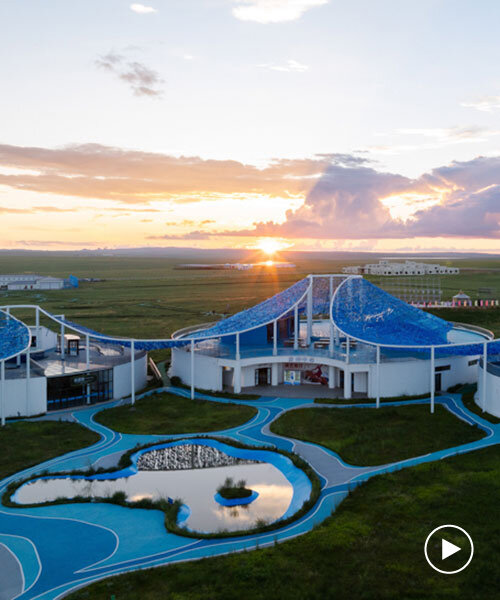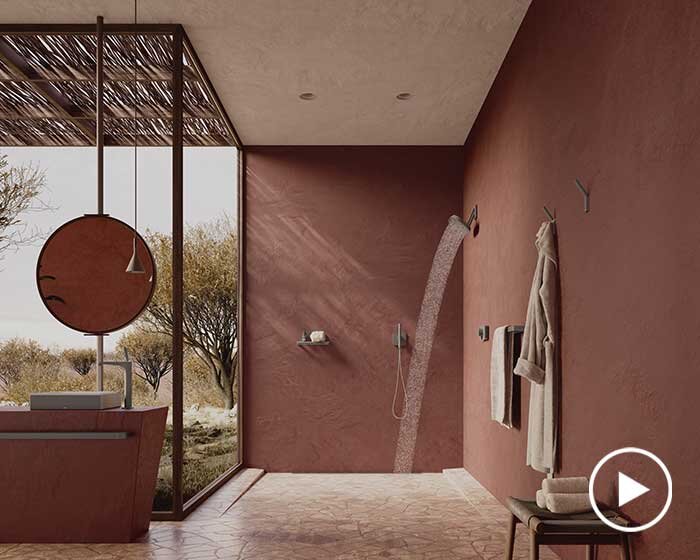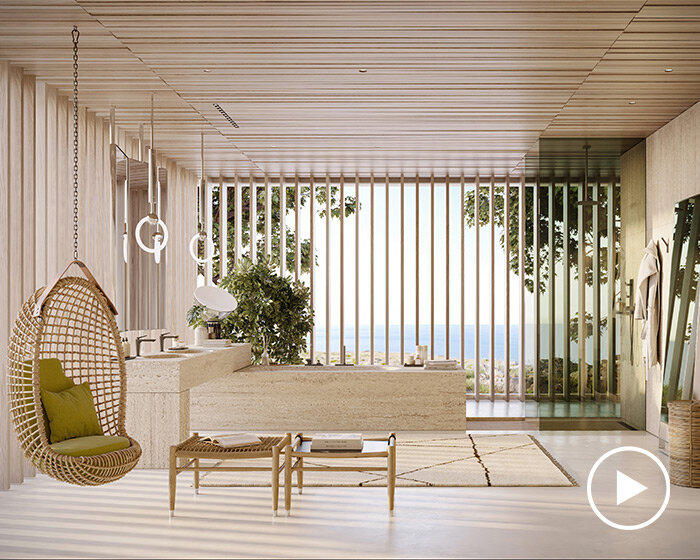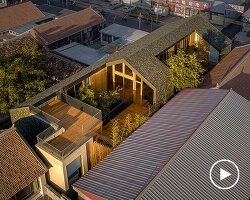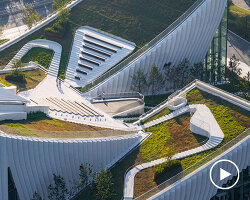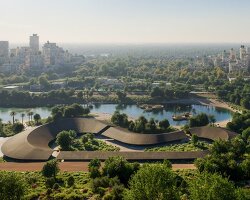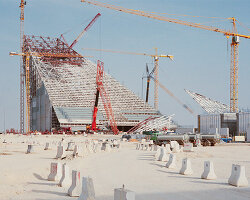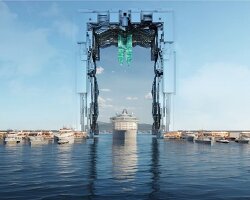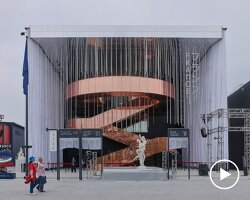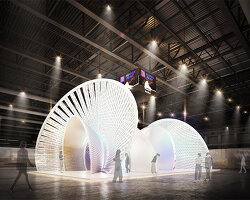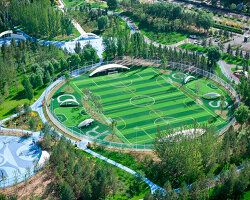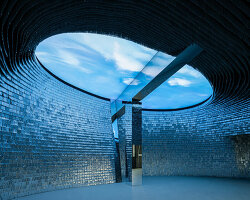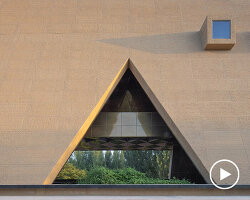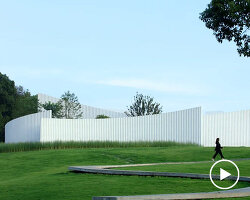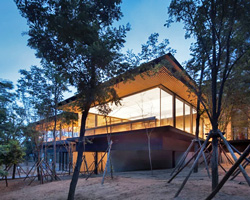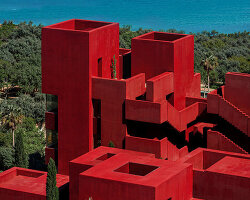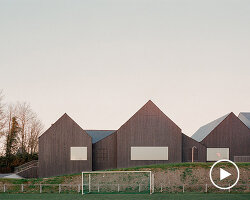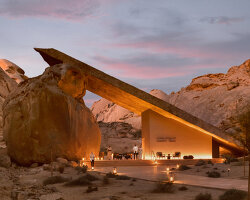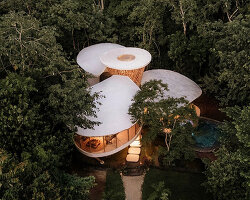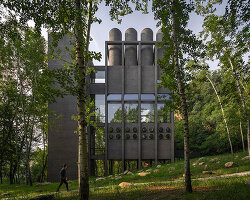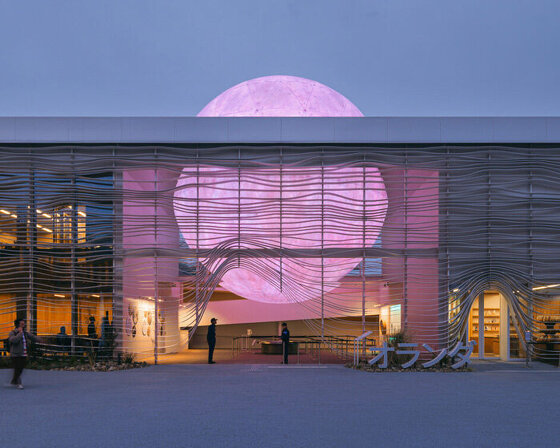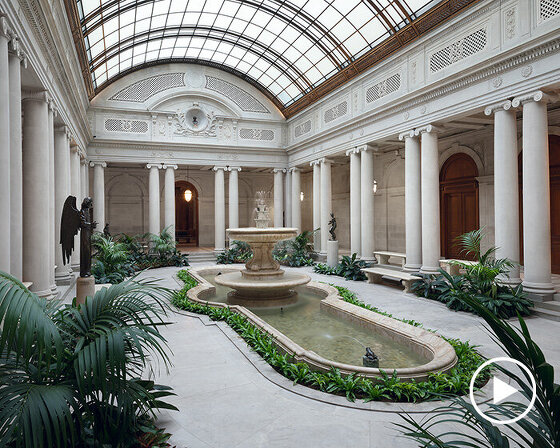PLAT ASIA UNVEILS MODEL FOR ECOLOGICAL TOURISM IN INNER MONGOLIA
Architect Bian Baoyang, leading the team at PLAT ASIA, introduces the Silk-Road Dreamland Steppe Resort as a model for ecological tourism and cultural integration on the Xilamuren Steppe in Baotou, Inner Mongolia. This project centers around the Live-by-Water planning strategy, which draws inspiration from the natural water routes found in the region, linking Swan Lake in the northwest to the Xilamuren River in the southeast. The architectural layout mimics these water flows, creating interconnected settlements across the steppe and a branching circulation system that evokes the traditional relationship between nomadic culture and water. At the heart of the resort, a multi-functional core zone houses a theater, exhibition hall, all-nations fair, commercial hall, and food alley, unified in a single building that serves as a communal hub.
In the core area, structures pay homage to the traditional Mongolian Ger, modernized with high-performance PTFE (polytetrafluoroethylene) membranes that offer insulation, skylights for natural ventilation, and reduced concrete and steel. The team chooses these materials to retain cultural significance while achieving a low-energy, decarbonized approach.
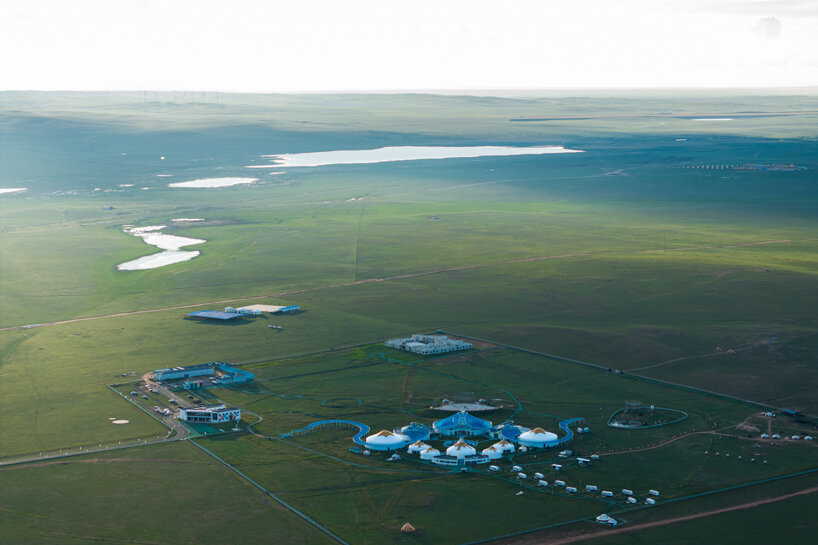
all images by Arch-Exist Photography courtesy of PLAT ASIA
Silk-Road Dreamland Steppe Resort follows natural contours
Beijing-based PLAT ASIA emphasizes steppe aesthetics through low-tech design principles and mindful use of materials to promote environmental recovery alongside cultural experiences. A central sunset axis guides views northwestward, anchoring the layout and connecting the south-north visitor center axis to the Live-by-Water strategy, creating a harmonious masterplan.
The Following the Wind installation captures the essence of the elements of the steppe. Starting at the visitor center, the installation follows the natural contours of the landscape, marked by white steel columns adorned with blue cloth that shifts with the wind. Representing the Tengri River, this structure visually ties the architecture to the land, extending toward the children’s wonderland and ending at the terrace in the core function zone. It invites visitors to experience the steppe’s natural elements—wind, sky, and grassland—engaging all the senses in an immersive connection to the landscape.
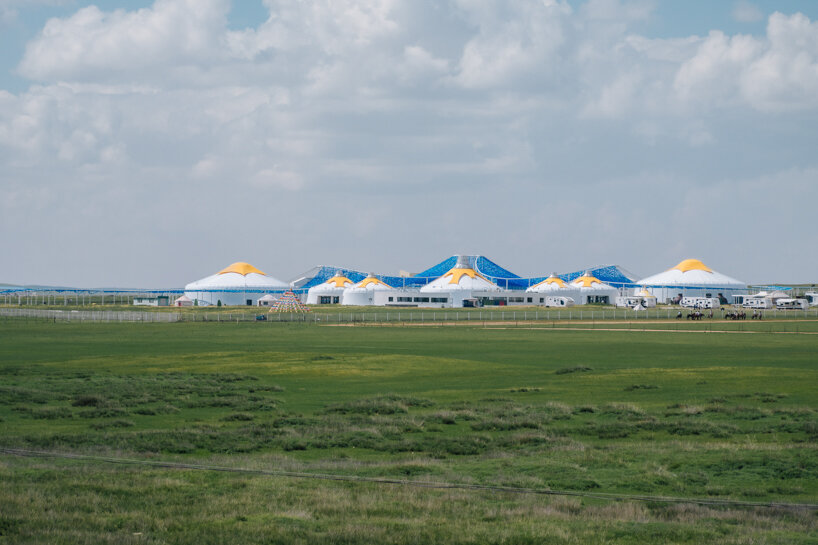
Silk-Road Dreamland Steppe Resort aims to become a model for ecological tourism and cultural integration
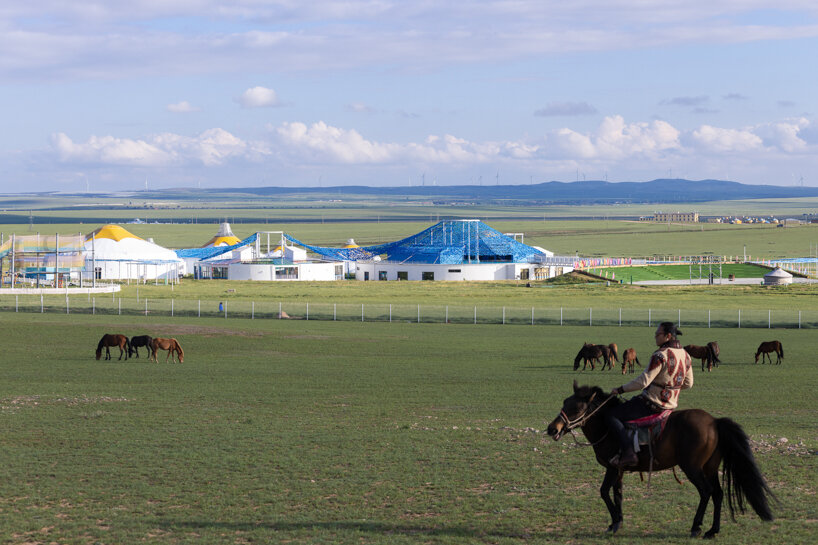
this project centers around the Live-by-Water planning strategy
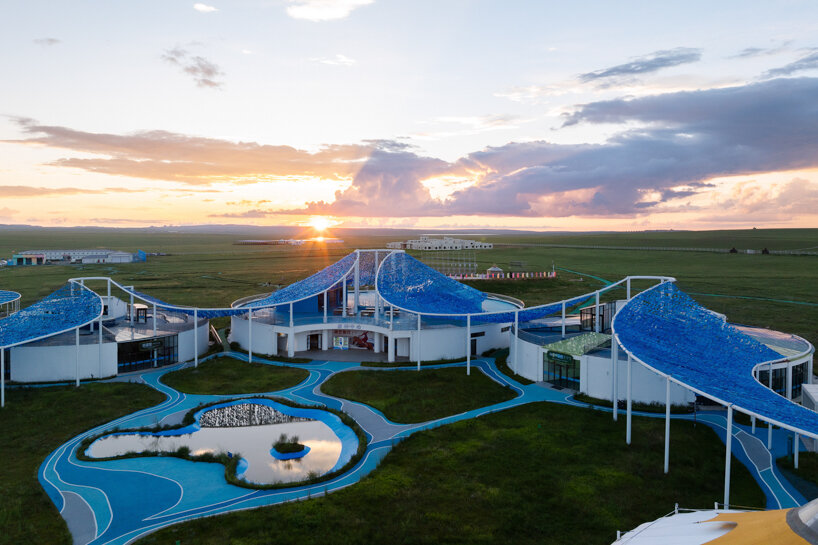
drawing inspiration from the natural water routes found in the region
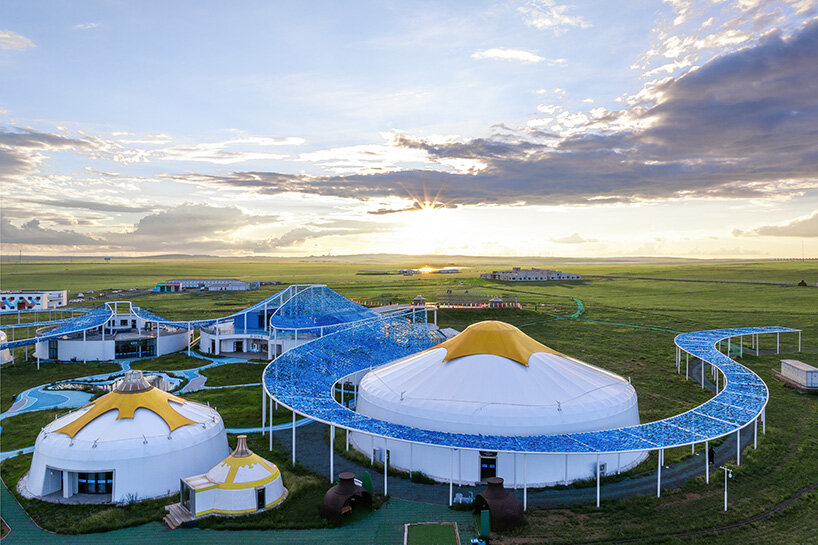
PLAT ASIA emphasizes steppe aesthetics through low-tech design principles
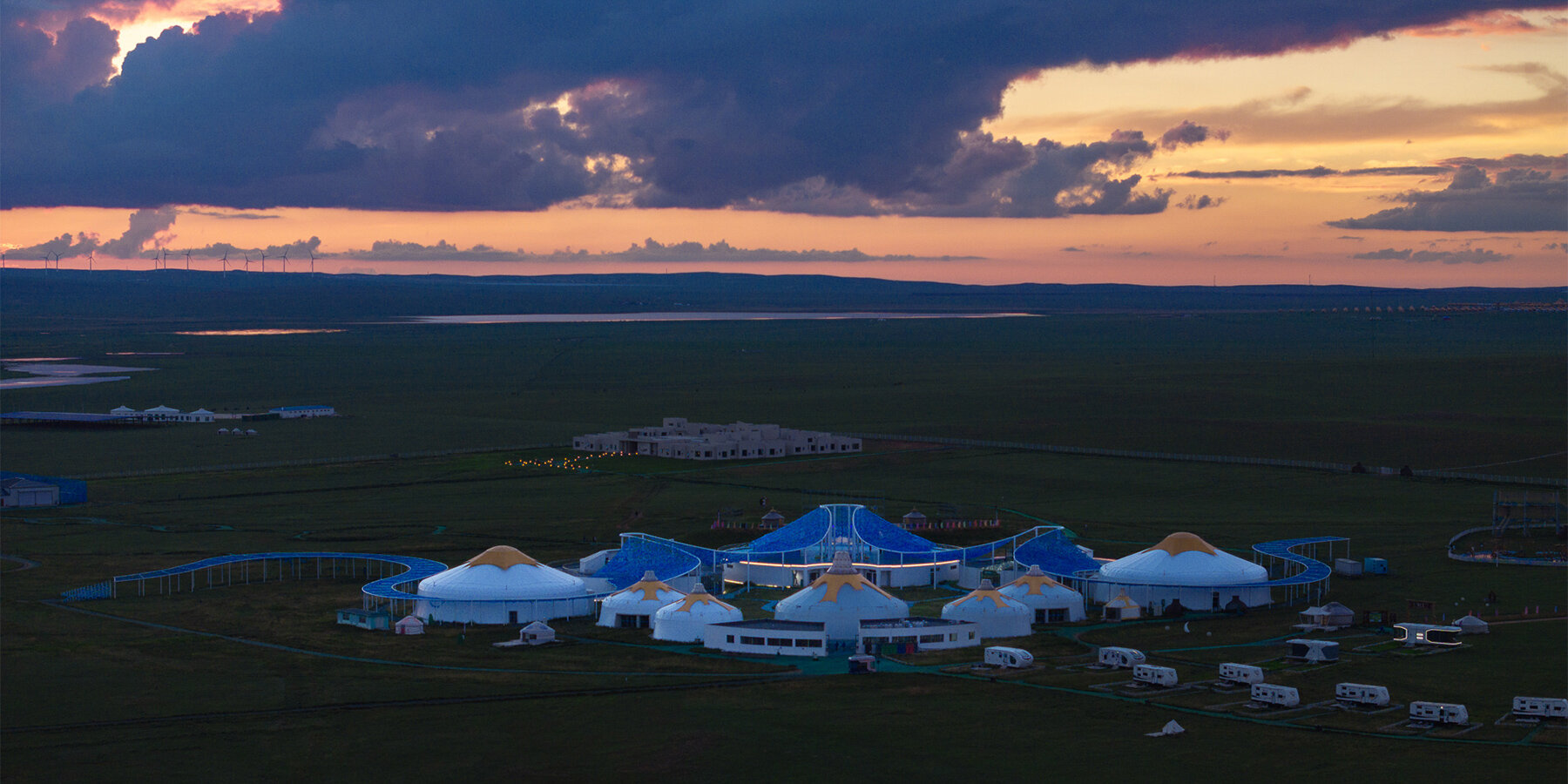
a branching circulation system evokes the traditional relationship between nomadic culture and water
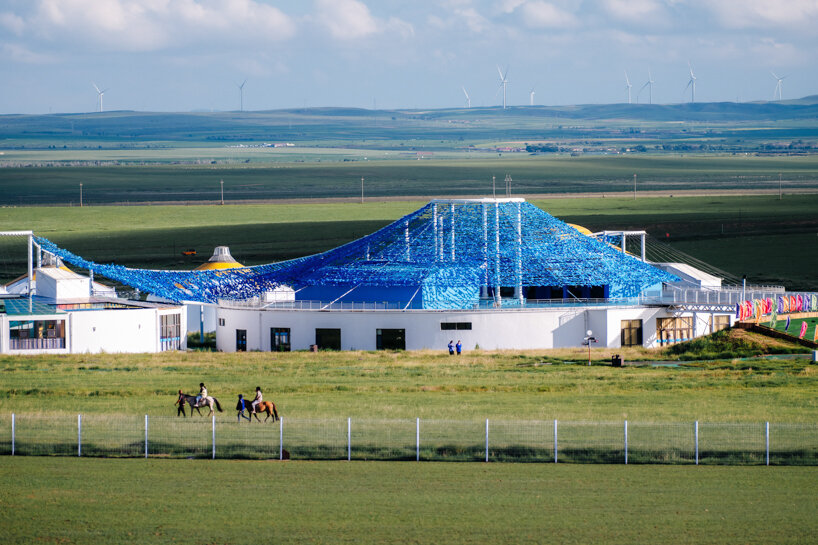
the architectural layout mimics water flows
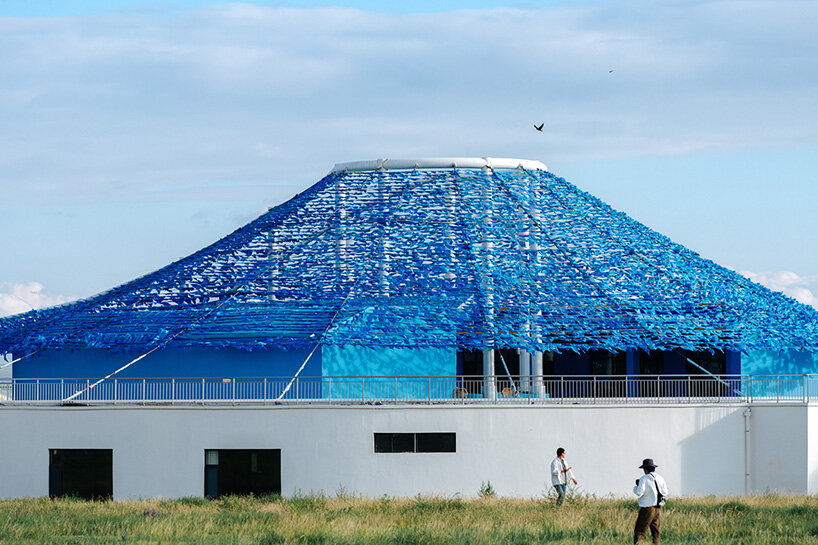
structures pay homage to the traditional Mongolian Ger
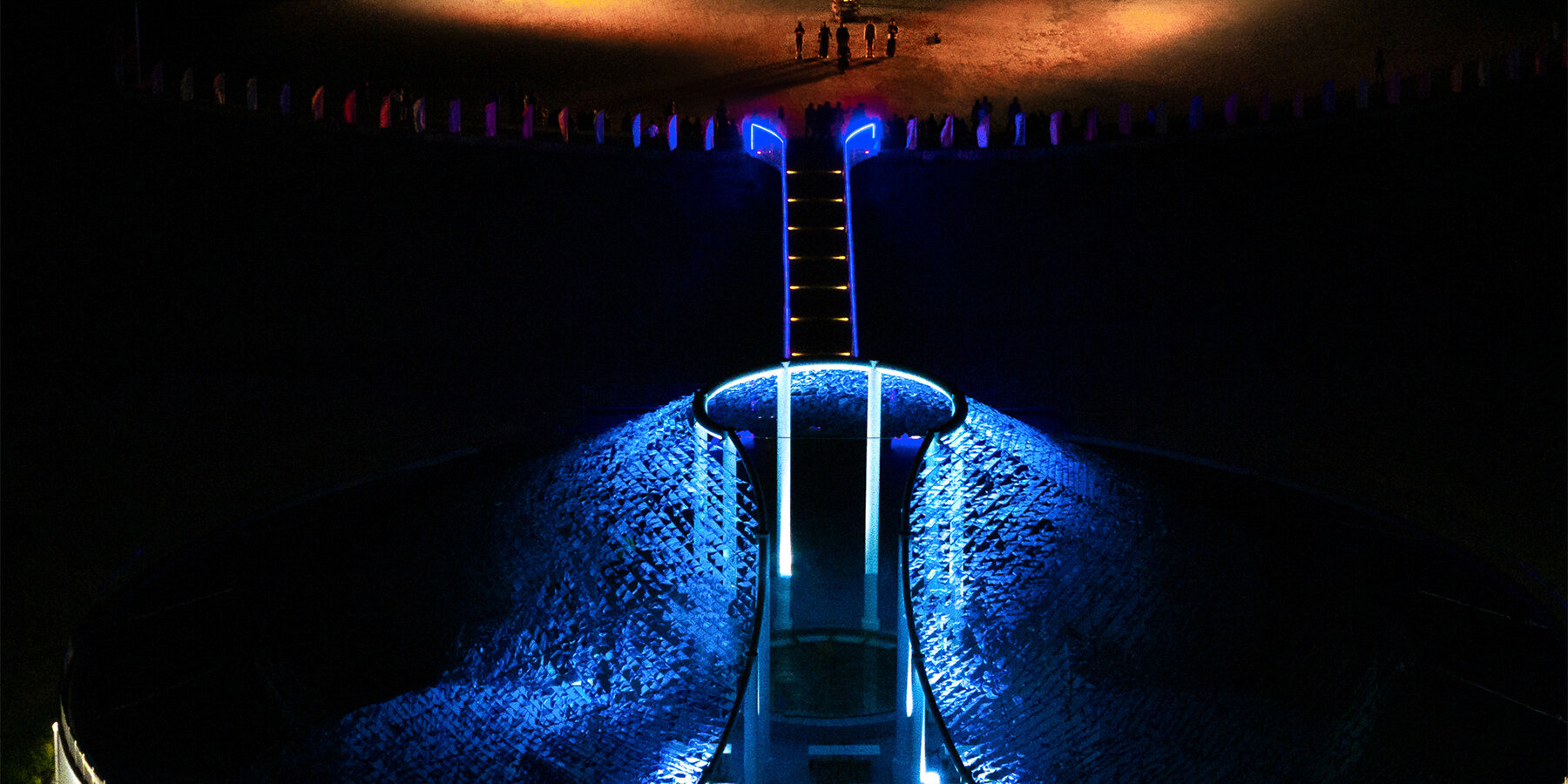
fluorescent lighting shows the way
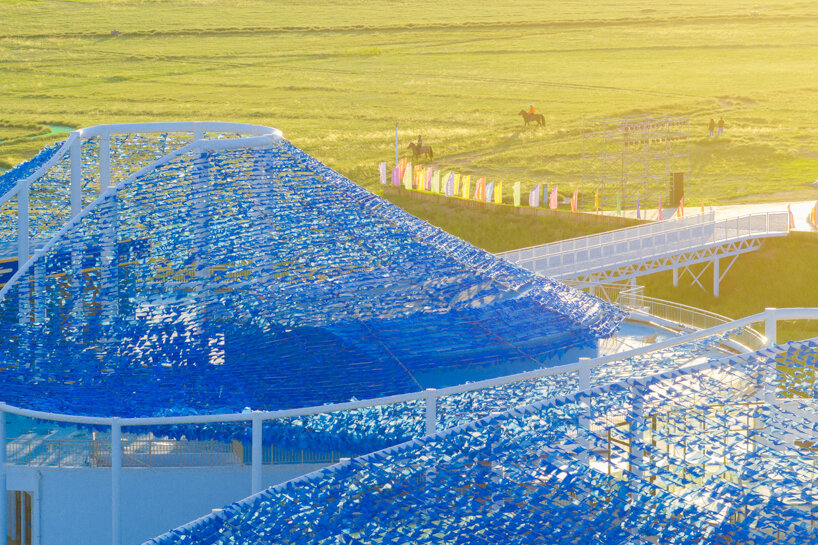
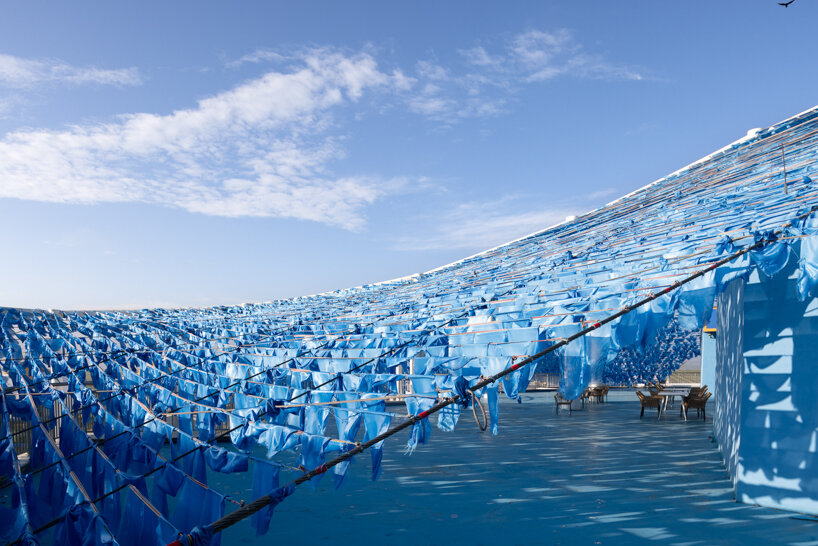
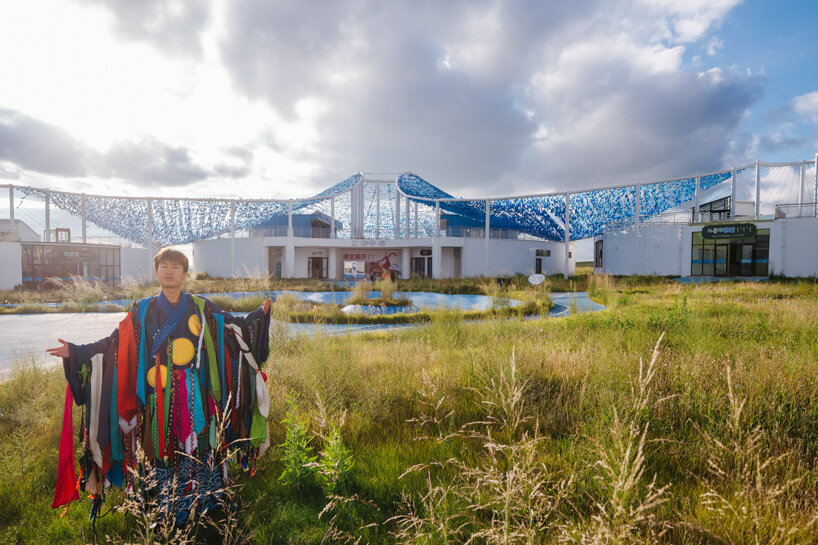
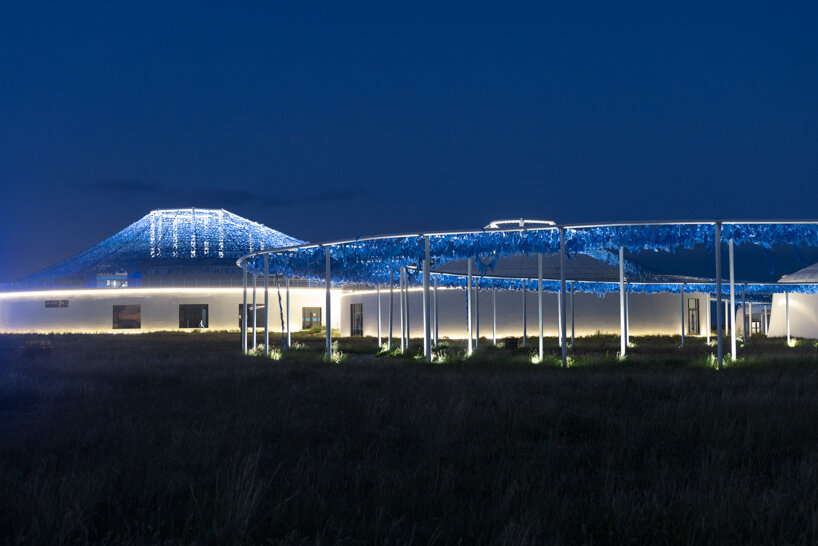
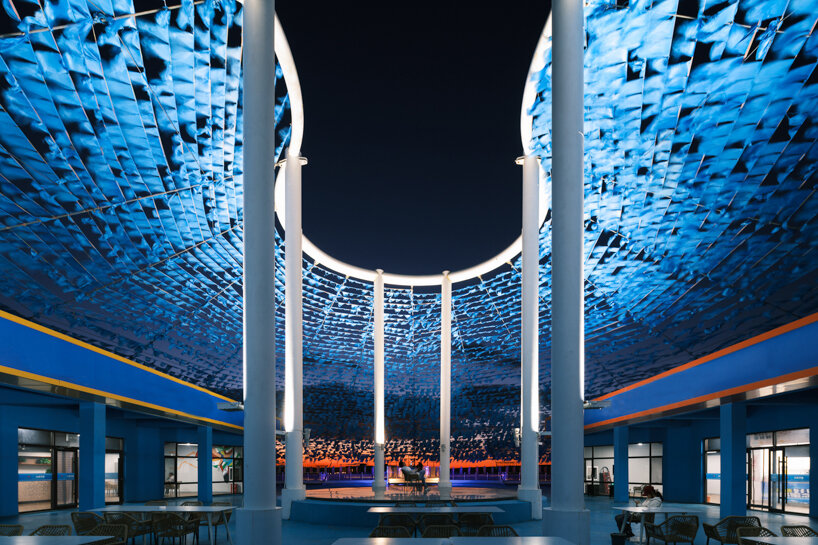
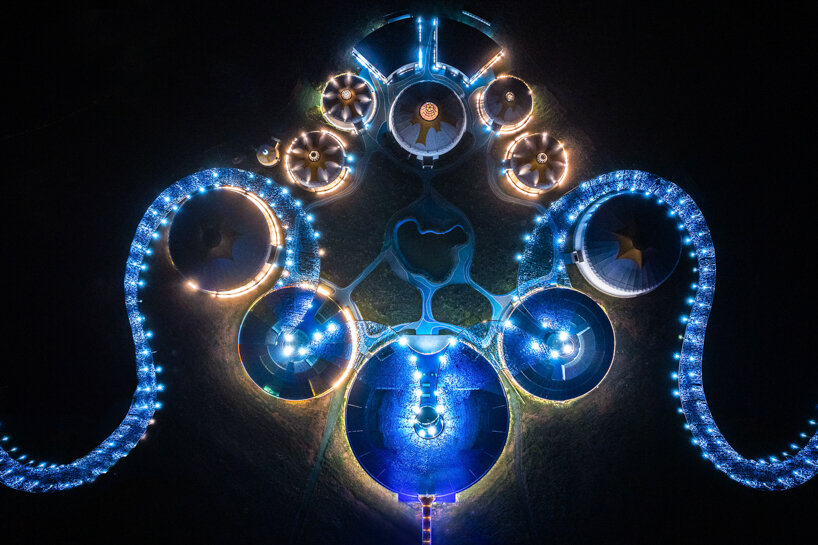
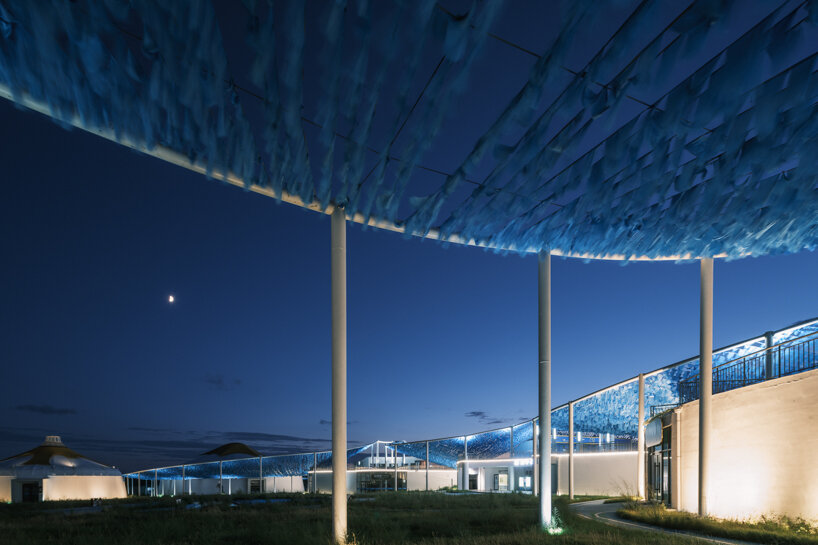
project info:
name: Xilamuren Silk-Road Dreamland Steppe Resort
architect: PLAT ASIA | @platasia
location: Xarmuren Hasar Steppe, Baotou, China
area: 50,000 sqm
building area: 8,000 sqm
principal architect: Bian Baoyang
project architect: Nandin
design team: Guo Lulu, Yang Lu, Liu Xinwei, Bi Baihui, Liao Yuanyu
clients: Baotou Jiu Zi Tourism Ltd., Co.
construction design: Shang Run Zhong Yi (Dongying) Design Ltd., Co.
construction contractor: Inner Mongolia Kaituo Construction Ltd., Co.
membrane company: Beijing Jinshengjie membrane Structure Technology Ltd., Co.
lighting company: Beijing Zhanxin Design Studio
photographer: Arch-Exist Photography | @archexist
video: Nandin@PLAT ASIA
designboom has received this project from our DIY submissions feature, where we welcome our readers to submit their own work for publication. see more project submissions from our readers here.
edited by: thomai tsimpou | designboom
